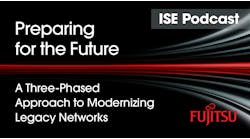Latest from Public Private Partnerships (P3)/Municipal Broadband
Incumbent Broadband Providers Versus Muni Broadband
Why the Fight?
Today, municipal broadband networks are merely a nuisance to the big US Incumbent broadband providers. A small rural community here, a small city there. Noise in their accounting systems. However, the recent Net Neutrality rulings, further fueled by on-going misconceptions and fear mongering, has led to an upsurge in interest for locally controlled broadband and Internet Access.
Thus far the Incumbents have done well keeping things at a nuisance level. But, how many concurrent battles do they want to fight? Legal and lobbying budgets have limits too. What if winning also means a tarnished brand? States and municipalities do have a say in civic infrastructure and municipal broadband initiatives. They are equally driven by community activism and anti-big corporations as they are for cheap and ubiquitous Internet access.
To put it frankly, the US broadband market is still broken. It is still the stalemated game of RISK® — but with the New T-Mobile at the grown-up table and Google Fiber still sitting at the kids’ table. (See Sources 1 and 2 listed at the end of this article.)
Internet Access as a "utility" has become the mainstream narrative across most demographics in the US. It’s becoming more difficult to argue that isn’t the case and there are not economic digital divides in rural, suburban, and urban areas.
Today’s narrative of "Internet as a utility" often equates "Internet" with "Broadband". This is a limiting definition. For the purposes of this article, Internet, or Internet Access, is just one broadband application. This is more than nuance and word choice. Broadband is the roads (all the way to the big city co-lo), and Internet (Access) is a service, perhaps a utility, that uses the roads non-exclusively and not for free.
People want better Internet, and to get better Internet we need better broadband. The issue arises when publicly-traded privately-funded companies don’t want to invest in the better broadband in all the geographic areas the people and government officials want them to. That leads to deeper digital divides.
Today’s industry structures and operating norms do not support the needs of tomorrow. The demands of tomorrow are outpacing the ability of today’s market participants to adapt their organizations and their balance sheets fast enough while meeting Wall Street’s expectations. Don’t blame the players, blame the game. They’re in a tough spot. So, why not let someone else fund and build a ubiquitous Fiber Access Fiber-to-the-Premise (FTTP)? Then those publicly-traded companies can simply lease the parts of it they actually need.
The Right Fight
Today, however, many cities are deploying networks and becoming the Internet Service Provider (ISP). This creates a hostile zero-sum game with the Incumbent broadband providers. One cannot expect the big Incumbents to sit back and let many millions of dollars in revenue and underappreciated assets disappear. Not surprisingly, they are doing what you would do: fight in every legal way they can.
How do we stop future needless battles? First, cities should adopt an open access model. Second, the big Incumbents should embrace municipal open access and stop all legal actions, political posturing, and delay tactics, against municipalities adopting this local, open, and neutral approach. Let them have at it with cities fighting to become the ISP.
Why would the big powerful Incumbents want widespread municipal open access broadband networks? The big broadband providers in the US seem more interested in content acquisitions than in broadband upgrades or overbuilds. AT&T/Time Warner and Comcast/Fox are 2 recent examples. They don’t seem eager to invest in FTTP buildouts, overbuilds, or upgrades. Clearly, no one is stepping up for universal coverage, unless it’s with 5G. Thus, it’s not far-fetched to infer they really don’t like the access network. Unless, of course it’s FTTx, with X=The Rich Enough, Big Shiny Buildings and Cell Sites.
A municipal network, defined as 100% coverage, perhaps with a fixed-wireless alternative for fiber challenged locations, would not provide them with their 3 X’s. It would also provide fiber access to every single-family unit (SFU), multi-dwelling unit (MDU) and small- and medium-business (SMB) as well.
This could be interesting to the Incumbent’s Board of Directors. They could offer their current services (Voice, Video, and Internet) at gigabit speeds to an entire community with zero investment in construction and fiber. They could then lease dark fibers or lit Layer 2 tunnels (e.g., VLANs) to each location served. Their traditional access network model of a large upfront investment and a long-life fixed asset with high OpEx would go away. With this model, their access network becomes a variable cost that matches actual demand.
This "win" is in their existing operating region too. The biggest Incumbents roughly have 25% of the US as broadband subscribers. That leaves 75% of Americans out of reach for their existing Triple Play and other fixed-
network services. These are the same services that they’ve already spent billions on developing and maintaining. Thus, whenever an out-of-footprint city deploys an open access municipal network, they would have an entire new customer base to market to and to serve. With zero construction costs and minimal CapEx and OpEx.
Yes, the Incumbents can serve the entire country with streaming or over-the-top (OTT) services, and many are today. The streaming video market is mature with well-established dominant Incumbents (e.g., Netflix, Hulu, and Amazon) and an increasing array of new entrants emanating from the video/TV value chain. Content is absolutely king in this game, and so is the quality of experience.
In fact, the competitive nature of this demand is forcing the market towards more 4K, and ultimately 8K, which means more bandwidth per stream. The out-of-region Incumbent’s streaming traffic will get the same treatment they give Internet traffic in their own region. Meaning best-effort treatment from the Internet Peering Point to the end device, which could be 100’s of miles and multiple hops through interim cities away.
Today, your streaming video competitor Netflix solves this by caching closer to the customers in local Central Offices or cable Headend/Hub. This is priority, just not paid priority. That means, the revenue generating streaming traffic (out-of-region) is treated as a second-class citizen compared to both the Incumbent’s competing services and Netflix streaming video service.
A Simple Solution?
The municipal open access architecture creates a level playing field for all service providers. Each service provider can join the network and offer any of their existing and future services on a fair, equitable, and non-discriminatory basis. But not for free. Since the open access network owner and operator ARE NOT offering competing services, the architecture is inherently neutral. AT&T, Verizon, Comcast, and Spectrum, can all offer competing services over the same shared infrastructure. So too could Amazon, Google, Apple, Facebook, et al.
Municipal open-access broadband is not a threat to Incumbent service providers. It’s not a zero-sum game, as it is when Google Fiber comes to town or the city becomes the ISP. An Incumbent should welcome someone else doing the heavy lifting of constructing a citywide fiber network. This local, open, and neutral approach to broadband creates the ultimate win-win for the entire broadband ecosystem, including the Incumbents. The big Incumbents win by being able to focus resources on competitive services, serve more customers, serve more customers at gigabit speeds, and level the playing field when serving at least 75% of US customers. It also transforms the access network into a variable cost that scales more linearly with actual demand.
Thus, the big Incumbents should encourage open access broadband network deployments and stop all law suits, regulatory tricks, and delay tactics. At the same time, municipalities should adopt the open access architecture and stop creating a zero-sum game by becoming the Internet Service Providers (ISPs). Once the ecosystem-wide economic benefits of open access broadband are fully understood, the industry can move beyond this economic and innovation killing stalemate.
Sources
For more information, please visit:
1. https://isemag.com/2017/09/the-real-ilec-transformation/
2. http://www.ubb2020.com/author.asp?section_id=539&doc_id=729052&





